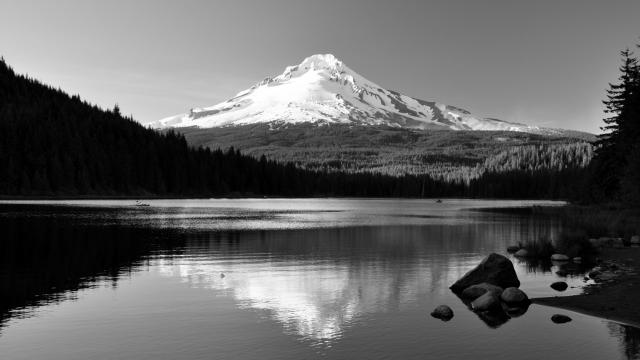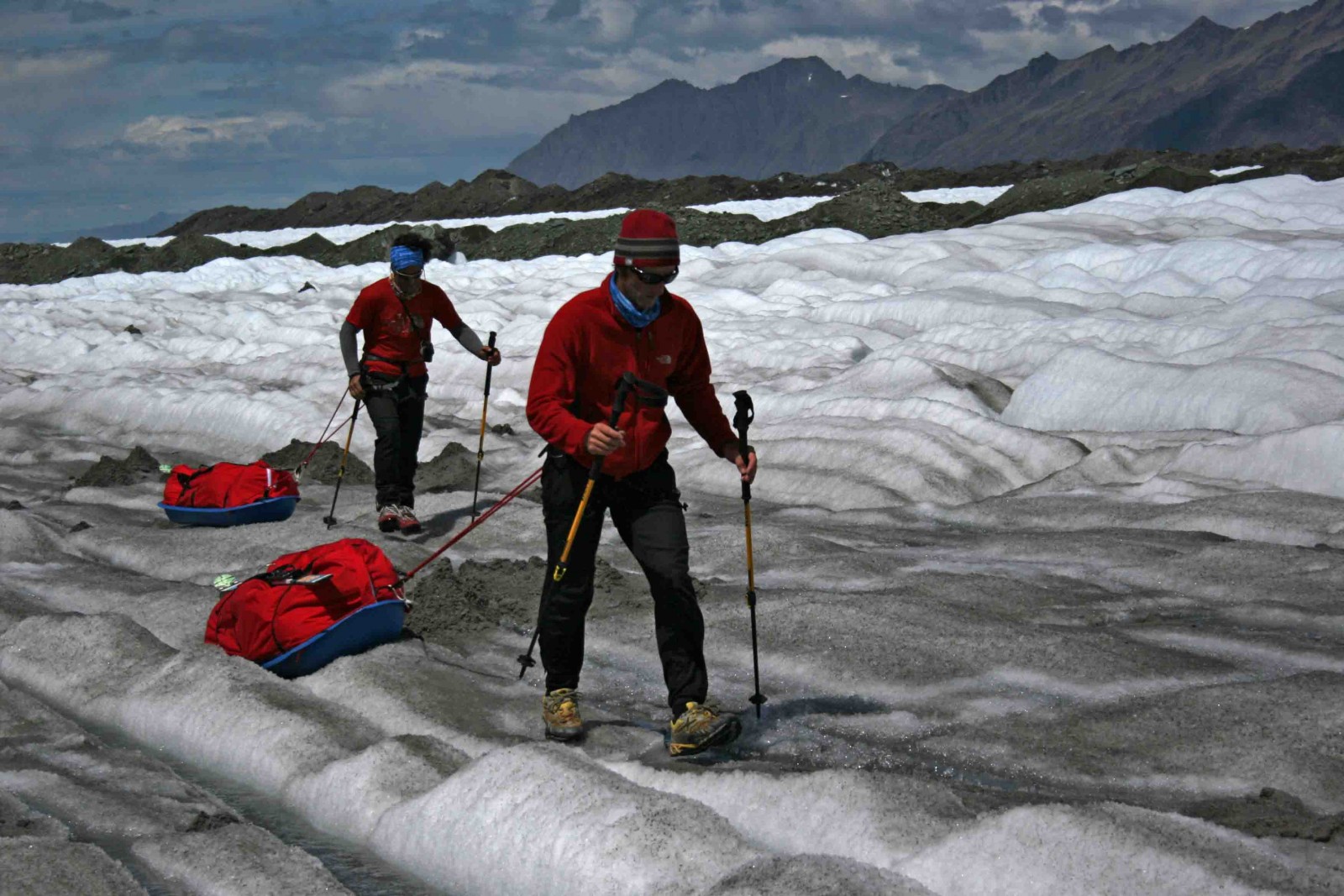
About halfway down the slope, the thought that all of this — the mountain, the snow, this bizarre sport revered by 65 million people around the world — had a chance of being diminished seemed reason enough to do something.
So writes Porter Fox, an editor at Powder, a ski magazine facing the fact that the white stuff is disappearing around the globe. In the mag’s latest issue Porter takes a 1,000-mile road trip around America's Northwest. He meets a sage of the snow, takes memorable runs, reflects on the beauty and intoxication of speed and steepness in the white, and laments the avalanche of dark data threatening it all.
In Oregon at Mount Hood, a 79-year old landmark named Bud Valian remembers the fifties, when snow was high, skiing fresh, and Timberline Lodge was being rehabbed into "one of the hippest winter resorts in the Northwest." Today, Valian adds, "The average elevation of the snowline is 1,200 to 1,400 feet higher now than it was." Some of the iconic mountain’s dozen glaciers have shrunk 60 percent and Palmer Glacier, the only year-round ski site in the U.S., is melting away.
Mt Hood’s story is the new normal. Data from multiple sources, including NASA, show the snowpack in America's Northwest falling 50 to 70 percent. “Spring arrives in Tahoe two and a half weeks earlier now than in 1961,” writes Porter, “and in vaunted cradles of skiing like the Alps, climatologists estimate that two-thirds of the ski resorts are in danger of closing by 2100.”
In New England and the Northeast., “On our current track, only four of the major 14 resorts in the region will be economically viable by 2100.” Snowmaking will delay shut downs, as will new fibers and plastic snow, now most evident in ski jumping (check out Sarah Hendrickson, 19, in her tank top and jumping skis, and en route to the Winter Olympics in Sochi, Russia; a Park City, Utah, native, Hendrickson jumps the same distances as the men). But it’s weird watching jumpers fly past green trees.
Almost as weird as plastic snow is seeing a magazine like Powder, dedicated to snow, hedonism, petrol-fuel machines and high-tech products, along with the travel needed to reach mountains, now laying the facts clearly on the line. Meanwhile, the ski biz seems in quasi denial about climate change’s colossal whack at its foundation.
Porter relentlessly stacks up data, anecdotes, and thrills, but repeatedly returns to the same conclusion: "The math regarding the situation is relatively simple: It's getting warmer and snow is melting." He also waxes poetic about the "the ingenuity and passion in the sport — and the distinct and essential human trait of doing something for the thrill of it. There is nothing in the world that compares to the feeling of giving yourself over to gravity and flying down a mountainside — no state of human presence that rivals carving your own line, through nature, no less."
Amidst the great photos of a disappearing sport are data bits about high carbon emissions. They tell us that since the ill-fated Kyoto Protocol in 1997, global CO2 emissions have increased 45 percent. They tell us that by this century’s end, if present trends continue, the average temperature in Alaska will rise between 8-13 degrees Fahrenheit, Washington and Oregon ski seasons will be reduced by 80 percent, and snowpack losses across the American West will vary from 25 to 100 percent. Present snowmaking costs eat up about 50 percent of the ski industry’s energy bill, adding to the acceleration of natural snow’s demise.
Overall, Porter documents the likely death of the very thing he loves; it’s an old and powerful narrative form. Despite lightning flashing in snow storms and winters disappearing in February, he hangs in there. In the feature he sings the blues but ends on a high note, tasting the metallic tang of snow in the High Tetons of Idaho and Wyoming and giving skiers a ray of hope. The Tetons “have faired relatively well recently, and sit in a sweet spot that the latest NOAA models say might stay relatively snowy over the next 70 years.”
Getting out of the tram at Jackson Hole and snapping on his boards, Porter gets ahead of the pack and is soon taking us down Far Drift. “It still took my breath away — accelerating downhill, the feeling of nothingness as my skis floated in the powder." Alas, soon the nothingness on Far Drift may well be a new dawn, a warm sun rising over a rusted tram, and skiing but a sweet memory of a bygone era.
Can this be averted is not a question Porter raises here (the piece is an excerpt from his new book DEEP: The Story of Skiing and the Future of Snow, out in November from Nowhere Publishing). Maybe he addresses it in the book; let’s hope he tries. A caption alongside a photo of a skier carving a burn above Salt Lake City, Utah, does posit this airball, "Being part of the winter community means being part of the solution."
How true is that? Twenty-five pages after Porter’s story are pages of thumbnails of 300 pairs of new skis, from Sick Day 125 to Ripper to Deathwish, along with slews of bindings and boots. From the ads in the mag we see who pays the bills. The end of snow message is fresh here, but the context remains troublingly old. It’s hard to feel deep sympathy for the demise of a sport that, in a quick half century, has gone from leather boots and ski-slope shacks to $1000 skis, $500 boots, and $100 day tickets — an ever narrowing joy for the well-to-do.
Near my home in Northern Vermont, Jay Peak, until quite recently synonymous with skiing sanity, continues its mega expansion funded by Green Card sales, evoking this thought, “Did we really piss away $100 million on this?" Still, one praises Porter Fox, awaits ski industry leadership pondering the new era of dark snow, and salutes Powder’s willingness to take a long look at the unthinkable: the end, nada, snow gone, Aspen all rock, the Alps too, maybe some drifts on Annapurna.... and we're talking in your baby's lifetime.
3 WAYS TO SHOW YOUR SUPPORT
- Log in to post comments















